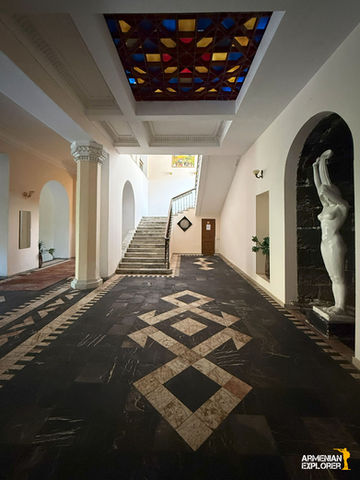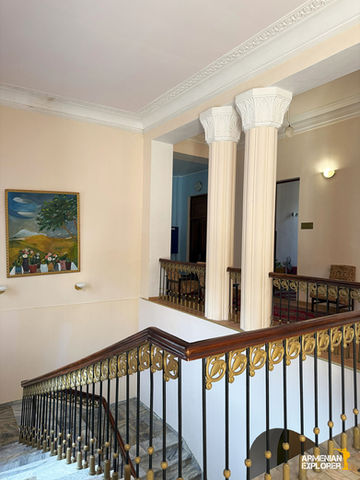

The Soviet-Era Sanatorium in Armenia Built by German Prisoners of War
On my urbex tours in Armenia, I often take travelers to one particular Soviet sanatorium — a place that feels like a true time capsule. Remarkably, it is still operating today, combining striking architectural design with a range of healing procedures. While we usually focus on the exploration side and don’t take part in the treatments, those who are curious can certainly arrange to experience them.
The history of this sanatorium is closely tied to World War II. During and after the war, thousands of German prisoners of war were brought to Armenia to take part in labor projects. At their peak, around 16,160 POWs from 18 different nations were held in ten camps across the country. Among them was the Austrian zoologist, ethologist, and ornithologist Konrad Lorenz, who would later win the 1973 Nobel Prize in Physiology or Medicine together with Nikolaas Tinbergen and Karl von Frisch.

The facade of the building...
The prisoners’ work was grueling: they built bridges, tunnels, apartment blocks, hydroelectric stations, and sanatoriums. The very sanatorium featured here was one of their projects. The workers were housed just across the gorge, directly opposite the building they were constructing.
What makes this sanatorium stand out is not just its history, but its interior design. Massive columns give the impression of holding the building on their shoulders, an image of strength and endurance. Though the structure has undergone renovations, it has preserved its original Soviet charm.

On the floor, visitors can notice an intriguing ornament resembling a swastika. With a closer look, and by rotating its “wings,” one can see how it could transform into the infamous symbol — a subtle, almost hidden trace of history embedded in the design.
Another striking feature is a statue of a woman pouring water over herself from a jar. Before the era of modern plumbing, this was a symbolic representation of cleansing, and it remains one of the sanatorium’s most eye-catching details.

The stained-glass arched window leading to the balcony adds a special charm to the façade, often making travelers pause for a while to take a closer look.
Beyond architecture and history, the sanatorium continues to function as a health center. It offers a variety of treatments ranging from mineral baths and massages to hydrotherapy and physiotherapy, attracting both locals and visitors seeking rest and recovery. Below is a list of treatments offered at the sanatorium.
Treatment of Diseases at the Sanatorium
· Cardiovascular diseases
· Gastrointestinal disorders
· Musculoskeletal disorders
· Nervous system disorders
Procedures
· General mineral baths
· Four-chamber galvanic baths
· Intestinal irrigation
· Gum irrigation
· Inhalation therapy
· Light therapy (electro-light treatment)
· Paraffin therapy
· Peat therapy
· Gynecological irrigation
· Underwater shower massage
· ECG (electrocardiogram)
· Massage
· Micro-enema
· Consultation with a specialist
· Hydrotherapy
· Acupuncture
· Hirudotherapy / leech treatment
· Apitherapy
· Clinical blood test
· Biochemical blood test
· Sonography



















